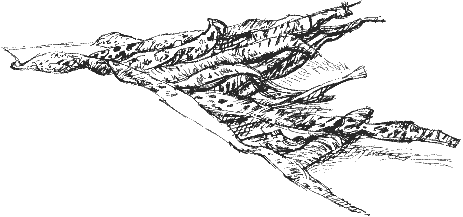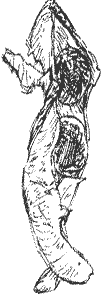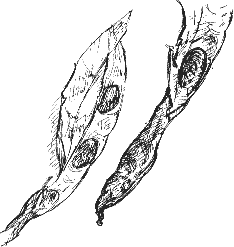Runner Beans Tuesday, 27th January 2004
These leathery-looking, leopard-spotted pods curve and writhe like seals on a rookery beach (of course they're not actually moving, although I was unable to finish this drawing because I knocked the box I'd put them in and there was no way I could get them back in the same arrangement again).
Pods v. BeansWe harvest our runner beans in the summer. We try to pick them before the beans fully develop, as the pods - which we slice and boil - soon start getting stringy. In Italy it's invariably the beans themselves that are eaten: they are used in soups and stews. We've never tried that. The runner bean, or Scarlet Runner, Phaseolus coccineus, grows in the wild in the mountains of Mexico and in some South American countries. Early Crop
Further south in England it would probably be possible to grow and harvest the crop in the greenhouse before the tomatoes go in. Here in West Yorkshire there probably would not be time to harvest the crop by May. We can have frosts as late as May which would kill the unprotected
bean plants, so I'll be lucky if I get this to work.
|

 Previous Page
Previous Page

 We've
been tidying up the vegetable beds but, before we dismantle the
garden cane wigwams, I pick the remaining pods from the withered
plants to use the beans as seeds; I'm going to try growing an early
crop by planting some of them in large pots in the greenhouse in
March. I'll plant them outside when I put the tomato plants in the
greenhouse in May.
We've
been tidying up the vegetable beds but, before we dismantle the
garden cane wigwams, I pick the remaining pods from the withered
plants to use the beans as seeds; I'm going to try growing an early
crop by planting some of them in large pots in the greenhouse in
March. I'll plant them outside when I put the tomato plants in the
greenhouse in May.